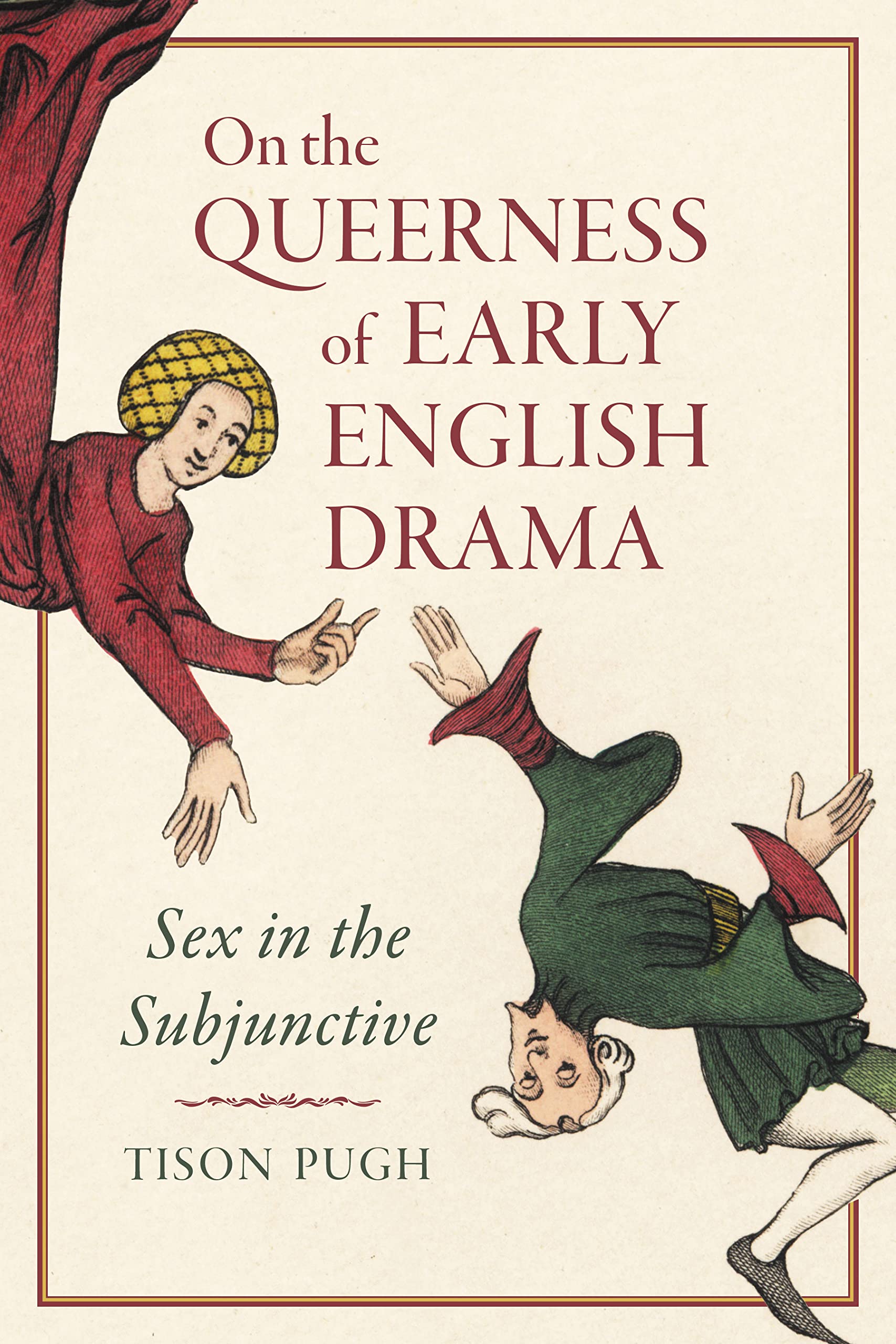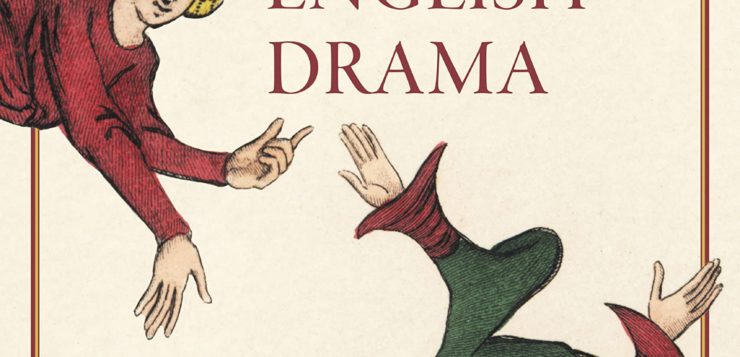 ON THE QUEERNESS OF EARLY ENGLISH DRAMA
ON THE QUEERNESS OF EARLY ENGLISH DRAMA
Sex in the Subjunctive
by Tison Pugh
Univ. of Toronto Press. 256 pages, $65.
THEATER is an art form that most of us would not associate with the Middle Ages. The early medieval Catholic Church condemned theatrical productions and prohibited the faithful from attending them. Various councils of the Church forbade clergy from viewing performances of mimes and stage plays. As a result, drama virtually disappeared from the historical record from the 5th to the 8th century, returning in the early 9th century in the Easter liturgical form of the Quem quaeritis, in which an angel appears before the tomb of Christ and asks the Three Marys, “Whom do you seek?” The women answer “Jesus,” and the angel proclaims that He has risen and the women rejoice and praise God. Since monks played all the roles in these proto-dramas, including the Three Marys, Pugh argues that these liturgical rituals, by incorporating cross-gender performance and costuming, “shifted the course of the Catholic liturgy and of Western theater, and its inherent queerness could not be eluded.” From this observation, Pugh proceeds to read the major texts of medieval drama in ways that open them up to queer interpretations.
On the Queerness of Early English Drama is divided into two parts. The first, “Queer Theories and Themes of Early English Drama,” provides the theoretical underpinning of Pugh’s analyses of the plays discussed in the second part, “Queer Readings of Early English Drama.” The book aims to uncover and interpret both male and female homosexual desire as portrayed in the major forms of medieval theater: liturgical drama, morality plays, secular interludes, and the mystery plays from the York Corpus Christi cycle. The subtitle, “Sex in the Subjunctive,” refers to Pugh’s methodology, which involves the use of grammar, specifically the subjunctive mood, which denotes behaviors that are desired or wished for but not acted upon. In the two theoretical chapters that explain the methodology governing his close readings of specific texts, Pugh identifies “four clusters of potential queerness”: dialogue, characters, performance, and scopophilia (literally the love of looking, usually at human objects of desire).
Pugh’s argument is bolstered by his readings of specific plays. His analysis of the morality play Mankind reveals the extent to which both the text and the performance of it by a cast of male actors bring out its sexual meanings. The play is a moral allegory which tells the story of Mankind, a representative of the human race, as he is tempted into sin by various allegorical vice figures (all male), followed by his repentance and ultimate salvation. Viewed from this orthodox moral perspective, the action of the play appears designed to inculcate orthodox Christian morality. Yet the action, much of which involves five male vice figures attempting to seduce Mankind into sin, together with its pervasive scatological imagery, affords abundant opportunities for homosexual innuendo. In one scene, for example, one of the vice characters, New-Gyse (gyse = fashion), plans to dress Mankind in the latest style of jacket. The jacket is repeatedly shortened to the point that the actor playing Mankind must reveal more and more of his legs, thereby approaching higher and higher to his private parts. Pugh points to a 1463 law that prohibited a man from wearing a jacket or coat that does not “cover his privy members and buttocks.” In performance, this scene could be staged to humorously maximize its potential homoeroticism.
Pugh’s illuminating readings of medieval religious plays provide a historical context for understanding modern and contemporary “meta-medieval” dramas inspired by them, such as Tony Harrison’s The Mysteries, Sarah Ruhl’s Passion Play, and Jordan Harrison’s The Amateurs, as well as plays that are at least somewhat influenced by the tradition of mystery plays, including Stephen Adley Guirgis’ The Last Days of Judas Iscariot and Paul Rudnick’s The Most Fabulous Story Ever Told. Pugh’s perceptive discussion of McNally’s controversial Corpus Christi (1998) reveals the potentially subversive power of medieval-inspired drama and convincingly demonstrates that modern and medieval theater are parts of an unbroken tradition. As McNally states in the preface: “Corpus Christi is a passion play. The life of Joshua, a young man from south Texas, is told in the theatrical tradition of medieval morality plays.” In Pugh’s words: “In the modern theater the medieval past is alive and well, and thus provides an intriguing opportunity to consider the shifting dynamics of queerness from the past to the present.” His well-researched and convincingly argued book demonstrates not only the value and relevance of the medieval theatrical tradition but also its long-suppressed queerness.
Nils Clausson is emeritus professor of English at the University of Regina (Canada).






